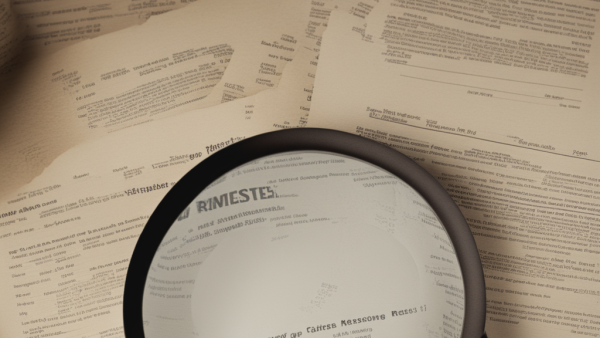Last updated: January 12, 2024
In business, understanding the flow of cash is crucial. One of the key metrics that help businesses gauge this flow is the Cash Conversion Cycle (CCC). This metric, often found nestled within the pages of financial reports, provides a snapshot of how efficiently a company can convert its investments in inventory and other resources into cash flows from sales.
The CCC, also known as the net operating cycle or simply cash cycle, is a measure of the time it takes for a company to sell its inventory, collect receivables, and pay its bills. It's a quantitative measure that evaluates the efficiency of a company's operations and management.
The CCC is not a one-size-fits-all metric. It varies by industry sector, reflecting the unique nature of different business operations. For instance, sectors heavily reliant on inventory management will find the CCC particularly relevant.
A decreasing or steady CCC over multiple periods is generally a good sign, indicating that the company is efficiently managing its cash flow. On the other hand, a rising CCC may warrant further investigation and analysis.
In this blog, we'll delve deeper into the intricacies of the business cash conversion cycle. We'll start by defining the CCC and discussing its importance. We'll also break down its components: Days Inventory Outstanding (DIO), Days Sales Outstanding (DSO), and Days Payable Outstanding (DPO).
Next, we'll guide you through the process of calculating the CCC. We'll explain the formulas involved and provide a practical example to illustrate the calculation process.
We'll then explore the implications of the CCC on business operations and discuss strategies that can help improve this crucial metric.
Finally, we'll examine real-life case studies of businesses with high and low CCCs, providing a tangible understanding of how the CCC operates in the real world.
Understanding the business cash conversion cycle is a vital part of financial management. It's a tool that can help businesses streamline operations, increase cash flow, and provide a more stable platform for growth. So, let's dive in and unravel the complexities of the CCC.
What is the Cash Conversion Cycle (CCC)?
The Cash Conversion Cycle (CCC) is a crucial business metric that quantifies the time it takes for a company to convert its investments in inventory and other resources into cash flows from sales. This cycle, often referred to as the net operating cycle or simply the cash cycle, is a measure of management effectiveness, indicating how swiftly a company can transform its cash on hand into even more cash. The CCC is a vital tool in evaluating the efficiency of a company's operations and management, with decreasing or steady values over multiple periods being a positive sign. However, it's important to note that the CCC is more applicable to certain sectors that heavily rely on inventory management and related operations.
The CCC is composed of three key components: Days Inventory Outstanding (DIO), Days Sales Outstanding (DSO), and Days Payable Outstanding (DPO). These components collectively account for the time needed to sell inventory, collect receivables, and pay bills without incurring penalties. Understanding these elements is essential for businesses aiming to improve their cash flow, streamline operations, and establish a stable platform for growth.
In essence, the Cash Conversion Cycle is a measure of how long each net input dollar is tied up in the production and sales process before it gets converted into cash received. It's a journey that follows the cash from initial investment, through sales and accounts receivable, and then back into cash. A lower CCC number is generally better for businesses as it indicates quicker returns on investment and superior money management. However, it's also possible for the CCC to be negative, which occurs when a business sells an item before paying the original supplier. This isn't necessarily good or bad, but it's a factor that must be considered when managing cash flow.
Definition and Importance of CCC
The Cash Conversion Cycle (CCC) is a crucial business metric that gauges the efficiency of a company's management. It's a measure of how swiftly a company can convert its cash on hand into even more cash. This is achieved by tracking the cash or capital investment as it's first transformed into inventory and accounts payable (AP), through sales and accounts receivable (AR), and then back into cash. The lower the CCC, the better it is for the company, indicating a more efficient operation.
The CCC is not just a number; it's a reflection of a company's operational efficiency. It provides insights into how effectively the company's management is utilising short-term assets and liabilities to generate and redeploy cash. It also offers a glimpse into the company's financial health concerning cash management and helps assess the liquidity risk associated with a company's operations.
However, the CCC isn't a one-size-fits-all measure. It's selectively applicable to different industrial sectors based on the nature of their business operations. For instance, it's highly relevant for retailers involved in buying, managing inventories, and selling them to customers. On the other hand, it doesn't apply to companies that don't have needs for inventory management, such as software or insurance companies.
In essence, the CCC is a vital tool for both internal and external stakeholders. It helps management adjust their methods of credit purchase payments or cash collections from debtors, while investors and analysts use it to track a business over multiple time periods and compare it with its competitors. A lower CCC value often indicates a company that's efficiently serving the needs of the market and its customers.
Components of CCC: DIO, DSO, and DPO
The Cash Conversion Cycle (CCC) is a critical business metric that is composed of three key components: Days Inventory Outstanding (DIO), Days Sales Outstanding (DSO), and Days Payables Outstanding (DPO). These components represent different stages in the cash flow process of a business, and understanding them is crucial to managing the CCC effectively.
DIO is the first component of the CCC. It represents the average number of days that a company holds its inventory before selling it. A lower DIO is generally preferred as it indicates that the company is selling its inventory quickly, which can lead to better cash flow and higher turnover. However, a very low DIO could also suggest that the company is not keeping enough stock to meet demand, which could lead to lost sales.
The second component, DSO, measures the average number of days that a company takes to collect payment after a sale has been made. A lower DSO is generally better as it means that the company is collecting its receivables quickly. However, a very low DSO could indicate that the company is being too aggressive in its collection practices, which could potentially damage customer relationships.
The final component, DPO, represents the average number of days that a company takes to pay its bills to its suppliers. A higher DPO is generally better as it means that the company is able to use its suppliers' money for a longer period. However, a very high DPO could suggest that the company is delaying payments too much, which could harm its relationships with suppliers.
In summary, DIO, DSO, and DPO are all crucial components of the CCC. By understanding and managing these components effectively, a company can improve its cash flow, reduce its need for external financing, and ultimately enhance its profitability.
Calculating the Cash Conversion Cycle
To calculate the CCC, you'll need to gather specific information from your income statements and balance sheets. This includes the value of your inventory, accounts receivable, accounts payable, revenue, and cost of goods sold (COGS) for a specific period. The period you choose to calculate the CCC for can vary, but a 13-week period is often recommended as it provides enough data for an accurate calculation.
The CCC is calculated using the following formula:
Cash Conversion Cycle = Days Inventory Outstanding + Days Sales Outstanding – Days Payables Outstanding.
Each entity in this equation is calculated using the information you've gathered from your financial reports.
Understanding the formulas and how to apply them is key to accurately calculating your CCC. In the following sections, we'll delve deeper into these formulas and provide a practical example of a CCC calculation. This will help you better understand how to calculate the average number of days it takes for your business to convert its investments into cash.
Remember, the CCC can be positive or negative. A negative CCC means you're selling goods before paying your supplier, which can be beneficial for your cash flow. However, it's important to manage this carefully to avoid potential issues.
In essence, calculating the CCC is a vital part of successful cash flow management. It provides valuable insights into the efficiency of your business operations and can help you make informed decisions to improve your financial health.
Understanding the Formulas
To calculate the cash conversion cycle (CCC), we need to understand three key formulas: Days Inventory Outstanding (DIO), Days Sales Outstanding (DSO), and Days Payable Outstanding (DPO).
The DIO formula calculates the average number of days a business holds inventory before selling it. It's calculated by dividing the average inventory by the cost of goods sold (COGS) per day. A lower DIO is generally better as it indicates that inventory is selling quickly, but it shouldn't be so low that the business runs out of stock and misses potential sales.
The DSO formula, on the other hand, calculates the average number of days it takes for a business to collect payment after a sale. It's calculated by dividing the average accounts receivable by the revenue per day. A lower DSO is preferred as it indicates that the business is collecting payments quickly, improving its cash flow.
The DPO formula calculates the average number of days a business takes to pay its suppliers. It's calculated by dividing the average accounts payable by the COGS per day. A higher DPO is preferred as it means the business can hold onto its cash for longer, increasing its investment potential.
The CCC is then calculated by adding the DIO and DSO and subtracting the DPO. This gives us the net time it takes for a business to convert its inventory and accounts receivable into cash, after accounting for the time it takes to pay its suppliers.
Understanding these formulas is crucial for any business owner or manager, as they provide valuable insights into the efficiency of the business's operations and its cash flow management.
Practical Example of CCC Calculation
Let's dive into a practical example to illustrate how to calculate the Cash Conversion Cycle (CCC) for a business. Imagine a company with the following financial data: an inventory value of USD 100,000, cost of goods sold per day at USD 5,000, accounts payable of USD 108,000, average day's purchases at USD 4,000, and the number of days of receivables is 17.
To calculate the CCC, we first need to determine the Days of Inventory on Hand (DOH) and the Days Payable Outstanding (DPO). The DOH is calculated by dividing the inventory value by the cost of goods sold per day. In this case, it would be USD 100,000 divided by USD 5,000, which equals 20 days.
Next, we calculate the DPO. This is done by dividing the accounts payable by the average day's purchases. So, USD 108,000 divided by USD 4,000 gives us 27 days.
Now, we have all the necessary components to calculate the CCC. The formula is DOH plus the number of days of receivables, minus the DPO. So, in our example, the CCC would be 20 days (DOH) plus 17 days (number of days of receivables) minus 27 days (DPO), which equals 10 days.
This means that, on average, it takes this company 10 days to convert its investments in inventory and other resources into cash flows from sales. This is a relatively short time, indicating that the company is efficient in managing its cash conversion cycle.
Implications of the Cash Conversion Cycle
The Cash Conversion Cycle (CCC) is a critical business metric that can significantly impact your operations. It's a measure of how efficiently your business manages its cash flow, from the moment you invest in goods to the time you receive payment from customers. This cycle, which can be either positive or negative, is a key indicator of your business's financial health and efficiency.
Understanding the CCC is crucial for businesses, as it provides insights into how long it takes to sell inventory, collect receivables, and pay suppliers. A shorter cycle, typically indicated by a lower CCC number, suggests a more efficient business operation. On the other hand, a longer cycle may indicate potential cash flow issues, which could affect your ability to meet financial obligations.
However, the CCC isn't just about numbers. It's also about understanding the dynamics of your business operations. For instance, a negative CCC isn't necessarily a bad thing. It could mean that your business is able to sell goods and receive payment from customers before it has to pay its suppliers. This could potentially improve your cash flow and provide more flexibility in managing your business finances.
But what happens when the CCC is longer than expected? This could indicate inefficiencies in your business operations, such as slow inventory turnover or delayed payments from customers. These issues could tie up your cash, making it harder for you to meet your financial obligations.
Therefore, it's important to regularly monitor your CCC and take steps to improve it if necessary. This could involve strategies such as speeding up inventory turnover, improving collections from customers, or negotiating longer payment terms with suppliers. By doing so, you can ensure that your business remains financially healthy and capable of meeting its obligations.
In conclusion, the CCC is more than just a financial metric. It's a reflection of your business's operational efficiency and financial health. By understanding and managing your CCC effectively, you can ensure that your business remains financially sustainable in the long run.",
How CCC Affects Business Operations
The Cash Conversion Cycle (CCC) plays a pivotal role in the operations of businesses, particularly those dealing with goods and customers. It's a measure of how efficiently a company manages its working capital, which directly impacts its liquidity and overall financial health.
For instance, a business with a high CCC value indicates that it takes a longer period to convert its investments in inventory and accounts receivable into cash. This could be due to slow-moving goods, delayed payments from customers, or quick payments to suppliers. Such a scenario can strain the company's cash flow, potentially leading to financial difficulties, especially for smaller businesses.
On the other hand, a low CCC value signifies that a company is able to quickly turn its inventory into sales and collect payments from customers, while also effectively managing its payment cycle with suppliers. This not only ensures a healthy cash flow but also provides the business with the financial flexibility to seize growth opportunities or weather unexpected challenges.
However, it's important to note that the CCC isn't a one-size-fits-all metric. For instance, online retailers like Amazon and eBay often have a negative CCC. This is because they receive payments for goods that are owned and shipped by third-party sellers, allowing them to hold onto the cash for a longer period.
In essence, the CCC serves as a key indicator of a company's operational efficiency and financial health, influencing its strategic decisions and long-term sustainability.
Strategies to Improve CCC
Improving the CCC is a strategic move that can significantly enhance a business's financial health. It's not just about reducing the cycle period, but also about making the process more efficient. Here are some strategies that businesses can adopt.
Firstly, businesses can negotiate better payment terms with suppliers. This doesn't mean delaying payments indefinitely, but rather finding a balance that benefits both parties. For instance, a 30-day payment term could be extended to 45 days, giving the business an extra 15 days of cash flow without damaging the supplier relationship.
Secondly, businesses can improve their inventory management. By reducing the amount of time goods sit in the warehouse, businesses can decrease their DIO and thus, shorten their CCC. This could involve implementing a just-in-time inventory system or improving demand forecasting to prevent overstocking.
Thirdly, businesses can streamline their collections process. This could involve offering incentives for early payment, implementing a more efficient invoicing system, or hiring a dedicated collections team. However, it's crucial to maintain good customer relationships during this process.
Lastly, businesses can use technology to their advantage. Automated systems can help track and manage the CCC, providing real-time data that can be used to make informed decisions. This can help businesses identify bottlenecks in their cycle and take corrective action promptly.
Remember, improving the CCC is a gradual process. It requires careful planning, regular monitoring, and constant adjustments. But with the right strategies in place, businesses can significantly enhance their cash flow and operational efficiency.
Case Study: CCC in Real Businesses
In business, the Cash Conversion Cycle (CCC) plays a pivotal role in determining the efficiency of a company's operations. It's a measure of how quickly a business can turn its inventory into cash. But how does this work in real-life scenarios? Let's delve into two contrasting examples to illustrate the concept.
Our first example, Company A, operates in the retail sector, much like Walmart or Target. This type of business involves buying and managing large inventories, selling them to customers, and often results in a high CCC. The cycle starts with cash in hand, which is used to purchase inventory from vendors. The goods are then sold on credit, creating accounts receivable. The cycle completes when the company collects the cash from its customers.
On the other hand, we have Company B, an online retailer akin to eBay or Amazon. These businesses often have a negative CCC. They receive funds from sales of goods that belong to third-party sellers using their platform. However, they don't pay the sellers immediately, allowing them to hold onto the cash for a longer period.
These examples demonstrate how the CCC can vary significantly depending on the nature of the business and its operational strategies. It's a crucial metric for businesses to monitor and manage for optimal financial health.
Company A: High CCC
Let's take a look at a business with a high CCC, which we'll call Company A. This company is a traditional brick-and-mortar retailer, dealing with physical inventory. They buy goods from vendors, store them in warehouses, and then sell them to customers. The nature of their business operations means they have a high CCC.
For example, Company A might buy a large batch of goods from a vendor on credit. They then have to store these goods in their warehouse until they can sell them. This process can take a significant amount of time, especially if the goods aren't in high demand. The longer the goods sit in the warehouse, the longer Company A's CCC becomes.
Once the goods are sold, Company A then has to collect payment from the customers. If customers are given a long credit period, it can take a while for Company A to get the cash in hand. This further extends the CCC.
In the meantime, Company A still has to pay its vendors. If the payment terms with the vendors are short, Company A might have to pay them before it has received payment from its customers. This can put a strain on the company's cash flow and increase its CCC even more.
So, in this case, Company A's high CCC is a reflection of the nature of its business operations. It's not necessarily a bad thing, but it does mean that the company has to carefully manage its cash flow to avoid liquidity issues. It's a clear example of how the CCC can provide valuable insights into a company's operations and financial health.
Company B: Low CCC
Let's take a look at an example of a business with a low CCC. This is a company that has mastered the art of inventory management, vendor payments, and credit collections.
Imagine a company, let's call it Company B, that operates in the retail sector. They've got a knack for predicting exactly what their customers want and when they want it. This means they rarely have excess stock on hand, reducing the time and money tied up in inventory.
Company B also has a strong relationship with its vendors. They've negotiated favourable payment terms, allowing them to hold onto their cash for longer. This is a great advantage as it means they can use this cash in other areas of the business before they have to pay their vendors.
But that's not all. Company B also has a robust credit collection system. They're able to collect payments from their customers quickly, further reducing their CCC.
This is a prime example of a business with a low CCC. They've managed to streamline their operations to ensure they're not tying up unnecessary cash in their business. This allows them to be more agile and responsive to changes in the market.
However, it's important to remember that a low CCC isn't the be-all and end-all. It's just one measure of a company's efficiency and financial health. But in the case of Company B, their low CCC is a clear indicator of their operational efficiency and strong cash management.
The business cash conversion cycle (CCC) is a critical metric that can significantly influence a company's financial health and operational efficiency. It's a measure of how swiftly a company can convert its inventory and other resources into cash flows from sales. The CCC is a reflection of the company's ability to manage its inventory, collect receivables, and pay its bills in a timely manner.
Understanding the CCC is crucial for businesses, as it provides insights into the efficiency of their operations and management. It's a tool that can help identify potential issues and areas for improvement in the company's cash flow management. By calculating the CCC, businesses can gain a clearer picture of their financial health and make informed decisions to improve their cash flow.
The CCC is not a static figure; it can change over time and vary across different industry sectors. Therefore, it's important for businesses to regularly monitor their CCC and compare it with industry benchmarks. This can help them identify trends and make necessary adjustments to their operations and strategies.
Improving the CCC is a strategic move that can lead to increased cash flow, streamlined operations, and a more stable platform for growth. There are various strategies that businesses can employ to improve their CCC, such as reducing the time it takes to sell inventory, speeding up the collection of receivables, and extending the time to pay bills.
The impact of the CCC on a company's success can be seen in real-world examples. Companies with a high CCC may struggle with cash flow issues and operational inefficiencies, while those with a low CCC are likely to enjoy better cash flow and operational efficiency.
In conclusion, the business cash conversion cycle plays a pivotal role in a company's success. It's a key metric that should be included in the company's financial reports and closely monitored. By understanding and effectively managing their CCC, businesses can enhance their cash flow, improve their operations, and set themselves up for long-term success.
Written by

Sam founded his first startup back in 2010 and has since been building startups in the Content Marketing, SEO, eCommerce and SaaS verticals. Sam is a generalist with deep knowledge of lead generation and scaling acquisition and sales.



